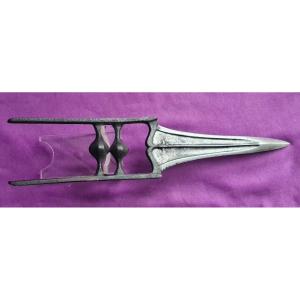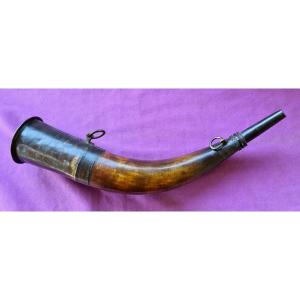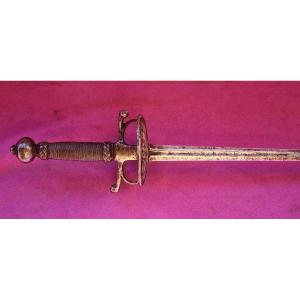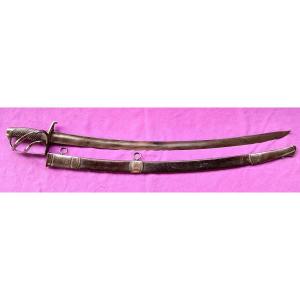On the blade appears on each side an inscription partly erased, which I did not know how to interpret. If one of my readers has a reading to suggest, I gladly accept it.
Moreover, the decoration of the hilt is quite unusual: On one side in the center of the cross a tower, and on the quillons olive branches. On the other side: in the center a thistle flower and on the quillons laurel wreaths
The quillons end with a character's head wearing a sort of diadem or archaic crown, higher in the front than on the sides.
All these representations owe nothing to chance, but this time I was not able to decipher exactly the "mutus liber"
If we take the thistle as the basis of the working hypothesis, we could consider a Scottish origin, and in this case the tower being the heraldic emblem of Aberdeen, could correspond, and it would be tempting to see in the figures of the quillons representations of Robert The Bruce... Obviously this remains a hypothesis
The laurels symbolize of course the victory, and the olive tree peace.
BLADE: it is of hexagonal section, very sharp, engraved on 2/3 of its length, with plant motifs and an inscription in an oval, partly erased by wear, which I could not read.
Blade length 31 cm, width near the guard = 2.4 cm, thickness near the guard 0.8 cm
GUARD: it is a cross guard, in white metal, probably silvered bronze. Chiseled decoration on each side: On one side a tower in the center, and on the quillons olive branches, and on the other side a thistle flower in the center and laurel wreaths on the quillons.
The quillons end in a crowned human head.
POMMEL: it is in the shape of a bulb, decorated with trophies of arms in the typical style of the 18th century.
GRIP : it is covered with a wire binding braided in chevrons.
Brass ferrules at each end of the grip.
It is therefore a beautiful dagger, even if the symbolism it carries raises some questions.
Ref CX-2306


















































 Le Magazine de PROANTIC
Le Magazine de PROANTIC TRÉSORS Magazine
TRÉSORS Magazine Rivista Artiquariato
Rivista Artiquariato